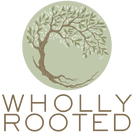|
It felt so odd typing 2020 into the title. Can you believe we are almost at 2020? That is amazing. I am excited to enter this new decade in our space, expanding and honing our vision for this land. This is the time of year where any spare time is spent looking throughout seed catalogs, comparing the seeds I purchased last year with my notes on how things did where, seeing what I still have some seeds for, and what I need to purchase. We had so many things do so well last summer, and we had a lot of new things go into the ground we won't see a harvest from for several years. Some of our woodland medicinals fall into that category as they take several years from seed - and we have some from bare root and some from seed. We may not see Goldenseal for awhile, but we know it is there. The plan for 2020 is to expand all of the garden areas, increase the forest guilds, plant around the whole back garage building, plant more natives and water loving plants in the moist areas, and more drought tolerant natives where it is dry. I love posting my lists to the blog because is it a great thing to have when I look back next year, comparing notes and memories. It also makes me feel more accomplished when working on a few acres, because when you don't plant in rows, sometimes it looks like not a lot is there, when in actuality it is a vast amount of plant materials, but spread out over land as plant do naturally in the wild. 2020 Medicinal Perennials
It feels like we have a small part of the acres planted, but when I look at that list I feel pretty satisfied that we have been working forward in our 15 months living here. One thing we are working towards is creating a botanical sanctuary space where we can give plant walks and where we work to preserve wild plants from our region and county. We are lucky to be very near a large state wildlife area that is several thousand acres with no trails, no parking (other than a few gravel spots on the highway). In studying some of the rare Wisconsin plants found in that area, I am able to focus also look to grow some of these endangered plants that are found within a mile of our land. Our area is a part of the wetland drumlin complex left when the Wisconsin glacier receded, and we have tamarack and mixed deciduous forest, drumlins (our house is along the edge of a drumlin), and the wildlife area even has a tamarack bog. Yes, I am a botany geek. It has so many unique grasses, sedge, and plants such as sensitive fern, marsh ettle, bellwort, bloodroot, blue cohosh, rue-anemone, canada mayflower, and even a rare bog rosemary. Wisconsin even has an orchid species, that has been reported in that area. We know that area also has muskrat, otter, mink, deer, cranes, wood ducks, fish, and many other animals and species that reflect how amazingly diverse this area has always been. If we can plant and diversity even a few acres of land, we will have a pretty spectacular place here. Big goals. One step at a time.
0 Comments
Your comment will be posted after it is approved.
Leave a Reply. |
denise cusackI am a certified aromatherapist, clinical herbalist, permaculture designer, organic gardener, plant conservationist, photographer, writer, designer, artist, nature lover, health justice activist, whole foods maker, and mother of two young adults in south central Wisconsin. Categories
All
©2007-23 Denise Cusack, all photos and text. Feel free to share my posts on FB or Twitter or online media or pin on Pinterest (thank you!), but please keep the links back to my website intact (meaning please do not take or copy my images off of this website and share them unattributed or without linking back here or use them without permission). Thank you! :)
|
